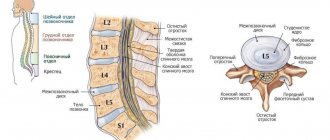The beauty of women has always been of great importance. Perhaps all modern men will agree with this, and what’s more, even the classics of Russian literature mentioned it. However, it happens that legs, or rather feet, lose their beauty due to a protruding “bone” at the base of the big toe. It is important to understand how to deal with the bunion so as not to torment yourself with pain all your life.
A sore “bunion” (as deformities on the big toes are often called) is perhaps the most popular orthopedic problem, and it is mainly women who suffer from it. Statistics say that men are four times less susceptible to it. The cause of pain in the bone lies in the failure of the ligamentous apparatus - a congenital problem transmitted mainly through the female line.
Why does the bone in my foot hurt?
We need to figure out what is the root cause of the diseased “bone.” This, not surprisingly, is flat feet. A healthy person has a concave foot. There are two concavities in total: the longitudinal concavity is located inside the sole, the transverse one is located near the base of the toes. When the ligaments and tendons cannot withstand the load, the foot becomes flat.
In the case of transverse flatfoot, the metatarsal bones, instead of running parallel to each other, begin to fan out, and the toes follow them. What's wrong with this, you ask? This causes the appearance of a protruding bone: the big toe does not move outward, but, unlike its metatarsal bone, turns inward. As a result, the head of the metatarsal bone of the big toe begins to move out of the joint, and we see a “bump” at the very base of the big toe - this is a visual manifestation of the “bunion”.
Further, the deformation of the bone progresses. Why does the bone in my foot start to hurt? Contact of the protruding knuckle with shoes provokes chafing, which eventually becomes inflamed, and the person feels pain in that same bone on the toe. Next, osteochondral overgrowth appears, and the bone protrudes even more. After some time, its neighbors begin to suffer from the pressure of the deformed thumb. They bend in the wrong position, are fixed in it, eventually acquiring an unnatural curved shape, and pain appears in them too.
This leg disease is a serious problem, especially for women. There is a constant feeling of heaviness and pain in the feet, and the ability to wear shoes and other elegant footwear is lost.
Soft tissue lumps in the area of the first metatarsophalangeal joint
Characteristic features: soft, mobile, painful, warm to the touch, can quickly increase in size.
Bursitis of the mucous membrane of the metatarsophalangeal joint
Most often, this disease appears when there are bone growths in the area of the first metatarsophalangeal joint. Sometimes it can develop independently, for example, when, when wearing tight shoes, the mucous membrane is chronically injured and rubs against the shoes.
- a swelling appears on the inside of the foot at the base of the first toe;
- appears suddenly, quickly increases in size;
- there is redness of the skin in the area of the bump, it is often hot to the touch, painful, soft;
- sometimes the liquid in it is detected;
- Conservative treatment is effective and quickly gives good results.
| Bursitis in combination with hallux valgus and Taylor deformity, hammertoe deformity of the second finger |
Arthritis of the first metatarsophalangeal joint
In arthritis, a “bump” is formed due to inflamed soft tissues, swelling, and an increase in the amount of synovial fluid. The most common causes of arthritis are gout, infectious diseases (reactive arthritis), and systemic diseases (rheumatoid arthritis). Characteristic symptoms of a “bump” in arthritis:
- the skin at the base of the first finger is red, swelling is located along the entire perimeter of the joint, often very painful;
- it is soft, hot to the touch, and can be very painful;
- in some cases, general body temperature increases;
- conservative treatment methods are effective and quickly give positive results;
- The choice of treatment method depends on the causes of arthritis.
| Acute arthritis of the first metatarsophalangeal joint | ||
What is the treatment for a bunion? What to do if the bones on your toes hurt?
Many people have asked this question. Let's deal with him.
There are many methods to combat thumb deformation, including traditional ones:
- compresses,
- iodine nets,
- foot massage
- warm foot baths with herbal infusions and sea salt.
and others.
These remedies can help relieve pain and reduce inflammation, but they cannot cure the disease itself. The joint remains deformed, and the pain in the foot eventually returns. Only qualified orthopedic surgeons can truly cure this disease, and the radical treatment is surgery on the bone.
Stages of flat feet
The orthopedist determines the severity of the foot deformation based on the condition of the arches, range of motion, impression of the sole, and x-ray. For an objective assessment, computer podometry (diagnosis of the load on the foot) is prescribed.
There are four degrees in total, which are characterized by the following:
- Slight fatigue of the legs, swelling, the big toe is not displaced, redness is noticeable on the side joint.
- Distinct pain towards the end of the day, the thumb deviates up to 20 degrees.
- The angle of inclination increases to 30°, the range of movement is limited, and there is no transverse arch. The pain spreads to the knees.
- The thumb deviates more than 40° and may become curled. The swelling does not subside, my legs, lower back, and head hurt. It is difficult to walk in ordinary shoes.
The first practices of surgical treatment of a diseased leg bone
At the beginning, the operations to treat the diseased bone were terrible. The orthopedic surgeon simply removed the protruding part of the bone. After a while, the disease appeared again, and in a more acute form, and the pain became even stronger.
The next step in treatment was the Wreden operation, which was named after the man who created it - the famous Russian surgeon R.R. Harmful. The patient experienced less pain during this operation. The method involves completely removing the inflamed metatarsal bone on the big toe. As a result, the big toe ceases to be connected to the foot and is supported only by soft tissues. Oddly enough, when everything heals, people feel relatively well, the pain goes away, and the ability to walk and lead a normal life returns. This practice still exists today. It would seem that there is no need to further develop the treatment of a diseased bone, but medicine continued to progress.
Modern methods of eliminating diseased foot bones
In modern orthopedic operations, bone fragments are cut out and moved to eliminate the diseased bone and give the correct position to the big toe. The finger is fixed with medical screws or knitting needles until final fusion.
There is another treatment option - “closure” of the deformed joint. Orthopedic surgeons remove the cartilage completely and reattach the metatarsal bone to the first phalanx of the big toe in the correct position. As a result, the bone and pain disappear.
Considering what was described above, we can say that a surgical revolution has occurred in the treatment of diseased bones. The most important thing is that the attitude towards the problem and the very essence of treatment have changed. If in the past a deformity of the thumb was considered a defect of one joint and its bones, today an integrated approach is used in the fight against the bunion.
Nowadays, orthopedic surgeons, even taking into account the operation, can rehabilitate a patient in one day. The next day, people begin to walk on their own, albeit with more support on the heel and the outer edge of the foot, but without a cast or crutches. After two weeks, the sutures are removed, and after 1-1.5 months the patient returns to his usual lifestyle, but without pain in the foot.
We can say that modern operations have virtually no disadvantages. Unfortunately, they are not made everywhere. There is a shortage of highly qualified surgeons and special, high-quality, and therefore expensive, equipment. The situation is the same in other countries, but at a much higher cost for surgery on the leg bone.
Are there alternatives to surgery for a sore big toe bone?
Not all people, when asked “what to do if the bones on the feet near the big toe hurt,” want to hear about the need for surgery. There are methods to relieve foot pain. True, if the problem is not solved, the foot disease will progress. Helps reduce pain and improve overall condition
- pain-relieving drugs
- silicone inserts for feet and toes,
- custom orthopedic insoles,
- night orthoses for fixing one or more fingers in the correct position,
- selection of comfortable shoes with the help of an orthopedist.
It should be remembered that in this case the deformity remains and the pain in the bone is relieved only temporarily.
Arthrosis of the tarsal joints
Tarsal joints form between the bones of the midfoot. The midfoot constantly endures heavy loads during walking and running and is injured (microtrauma).
In this case, the articular surfaces are damaged, the cartilage becomes thinner, and over time osteophytes (bone growths) appear - arthrosis develops.
Characteristic symptoms:
- these “bones” are hard, often painful, and can increase in size due to inflammation of the soft tissues;
- they appear on the dorsal surface in the area of the instep of the foot;
- Walking in tight shoes can be very painful.
| A. Osteophytes in arthrosis of the metatarsocuneiform joint | A. Lump due to arthrosis of the metatarsocuneiform joint |
What is bunion surgery?
It’s still not entirely clear what to do if the bones on your feet near your big toe hurt? Let's take a closer look at the operation to remove the diseased bone. Surgical intervention on the bone of the big toe is expressed in the correction of the angle between the metatarsal bones and the phalanges of the fingers. This allows you to return the big toe to its normal position, correct transverse flat feet, and ultimately relieve pain and return the foot to its full function.
In each specific case, the surgical plan may vary depending on the degree of deformity of the foot and accompanying changes in the other toes.
Why does transverse flatfoot develop?
In 8 out of 10 people, the bony arch drops due to overload of the foot and decreased muscle tone. The load on the inner part, the phalanges of the fingers, increases, and the foot takes on a flattened shape. The main causes of foot deformation:
- Weakness of connective tissue, gene defects.
- Weakening of muscles and ligaments due to insufficient physical activity.
- Carrying and lifting weights, strength sports, excess weight.
- Staying on your feet for a long time (guides, salespeople, welders, waiters, hairdressers).
- High heels, narrow and small shoes.
- Ankle injuries, rupture of tendons and ligaments in the arch.
Preparing for bunion surgery
At the initial consultation, the doctor will explain the surgical plan to you and tell you how to prepare your leg for surgery.
If the diseased bone on the foot is not too large, and there are no changes in other toes that require intervention, the entire hospitalization will take only one day.
It is a good idea to prepare your home for the recovery period following surgery. You may want to rearrange your furniture to make it easier to walk around. It is also advisable to stock up on food so that you don’t have to go shopping, which will be uncomfortable given the pain in your finger.
Surgery to remove the bunion to relieve pain in the big toe can be performed under either local or general anesthesia. If the operation is performed under local anesthesia, after several injections at the level of the ankle joint, you will no longer feel your feet. The operation can also be performed under spinal anesthesia, in which sensitivity will be completely absent in both lower extremities, which means the patient will not feel pain.
Before any of these anesthetics, it is recommended that you do not eat for 6 hours before your planned surgery.
Your surgeon will tell you what will happen before, during, and after surgery. If there is something you don't understand, don't hesitate to ask. After you ask all the questions you are interested in and receive answers to them, you will be allowed to sign a consent to undergo surgery on your leg.
Treatment
Conservative treatment
Treatment of hallux valgus almost always begins with the selection of comfortable shoes that do not cause friction or stress. In the early stages of Hallus valgus, wearing shoes with a wide front can stop the progression of the deformity. Since the pain that results from bunions occurs due to pressure from shoes, treatment focuses on relieving the pressure that shoes place on the deformity. Wider shoes reduce pressure on bunions. Bunion pads can reduce pressure and friction from shoes. There are also numerous devices, such as spacer orthotics, that can splint the toe and change the load distribution on the foot.
Drug treatment and physiotherapy
Nonsteroidal anti-inflammatory drugs and physical therapy may be prescribed to reduce inflammation and relieve pain. In addition, corticosteroid injections are possible. Long-term physical therapy has not proven to be therapeutically effective.
Orthopedic products
It is possible to use various orthopedic products (instep supports, toe correctors, interdigital rollers). The use of orthopedic devices helps to stop further deformation in the early stages. With severe deformation, the use of orthopedic products can only slightly reduce pain. Custom insoles help correct damaged arches.
If the deformity is caused by a metabolic disorder or a systemic disease, then it is necessary to carry out treatment aimed at correcting the underlying disease with the involvement of a rheumatologist or endocinologist.
What happens during bunion removal surgery?
Surgery on a sore leg rarely lasts more than 1 hour, but the duration still depends on the degree of deformity. There are different options for surgical treatment of bunions, using both open and percutaneous surgical techniques. When using the closed method, artificial “fractures” called “osteotomies” are performed, which restore the normal position of the bones of the foot. With the open method, an incision about 5-7 cm long is made along the inner surface of the foot, which allows you to accurately determine the required angle at which to operate and the degree of displacement of the bone fragments. If the surgeon is experienced, the osteotomy can be performed in a closed manner. With such interventions, large scars are not left, and postoperative pain is usually less. But sometimes in such cases there may be incomplete correction of deformity and delayed consolidation of osteotomies. It is also possible to combine closed and open methods, for example, surgery on the 1st metatarsal bone is performed openly, and on the small rays and phalanges closed.
Hygroma of the foot
Hygroma is a “hernia” of the joint capsule or tendon sheath. A bulge can form on the dorsum of the foot from the ankle to the toes.
Features of hygroma on the foot:
- Forms on the dorsum of the foot. Hygromas on the plantar surface of the foot are rather an exception.
- At the beginning of its occurrence, it periodically appears and disappears, then becomes constant.
- Painless, dense or soft-elastic consistency, often mobile.
- When rubbing with shoes, signs of inflammation may appear: redness, pain, swelling.
- When wearing tight shoes it causes discomfort and pain.
| Appearance of the foot with hygromas |









